British newspaper company develops 'editor that tells typos in articles'

How we made Typerighter, the Guardian's style guide checker | | The Guardian
https://www.theguardian.com/info/2021/jan/26/how-we-made-typerighter-the-guardians-style-guide-checker

Style Guide of The Guardian that the first edition was issued in 1928, in the article creation time on the Internet
When an employee who joined the company mid-career as a deputy editor created a correctness judgment rule based on a style guide using regular expressions , the number reached 13,000. In addition, since style guides are updated with the times, there was a need for a mechanism that allows writers to write articles that comply with the latest style guides.
Against this background, The Guardian's editorial tool development team has developed an editor called Typerighter that makes it easy to write articles that follow style guides. On YouTube, how Typerighter actually works and the system configuration etc. are released
Typerighter hard at work on a production article. --YouTube
When Typerighter loads the text, typographical errors based on The Guardian's style guide are highlighted.
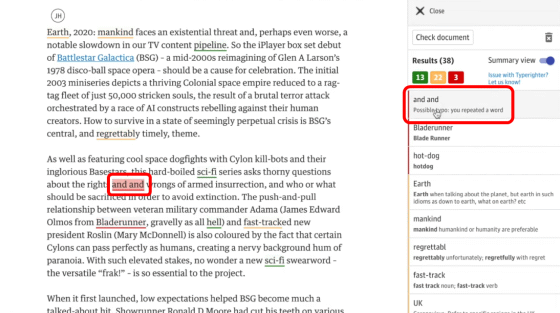
Click on the highlighted area and a pop-up suggests the correct notation. If you click the green button ...
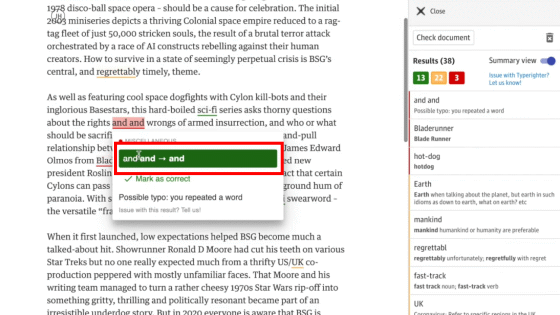
It is possible to correct typographical errors with the proposed words. Like this, Typerighter is an editor that makes it very easy to collate sentences with style guides.
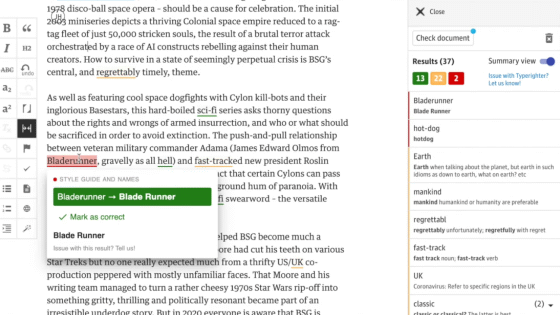
The system design of Typerighter looks like this. The rules of the style guide are saved in the Google spreadsheet corresponding to the 'Rule management service' in the figure, and the UI of Typerighter seen from the browser is developed using the editor framework ' ProseMirror ' on React. .. The core feature of Scala 's 'Rule application service' is to get the rules from the spreadsheet, match the words sent by the browser with the rules, and return the results to the browser.
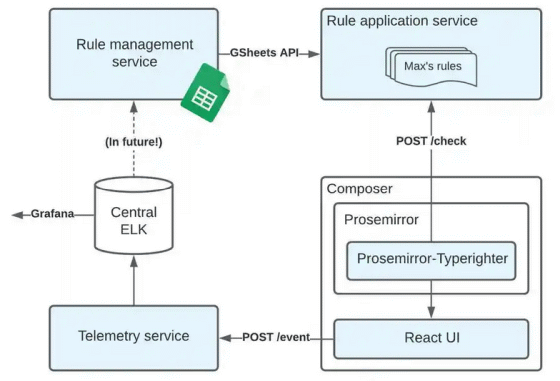
In addition, log information such as 'Which proposal is frequently accepted by writers' is
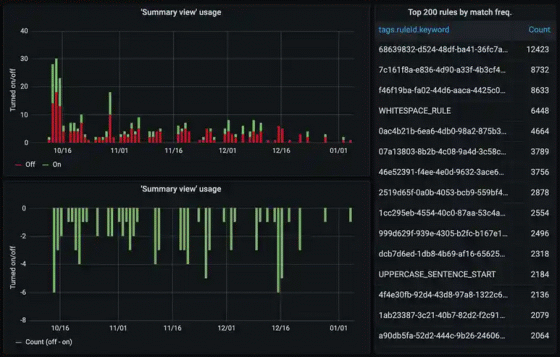
A major feature of Typerighter is that it 'suggests the correct word' instead of 'automatically correcting' typographical errors. Regarding this feature, the development team commented, 'Typerighter can be consistent with style guides, but it is not a substitute for editorial judgment in the field.' The purpose of Typerighter is to reduce the extra work of the writer and provide an environment where you can concentrate on writing articles.
As of January 2021, Typerighter has been used for half of the articles posted to The Guardian, and plans to replace Google Sheets with its own rule management system in the future. In addition, this article itself that explains Typerighter is also checked by Typerighter, and it seems that some typographical errors were found.
Typerighter is open source on GitHub and can be used by anyone.
GitHub --guardian / prosemirror-typerighter: The client-side companion of Typerighter: manage matching ranges in Prosemirror documents with spellchecker-like semantics.
https://github.com/guardian/prosemirror-typerighter
Related Posts:







